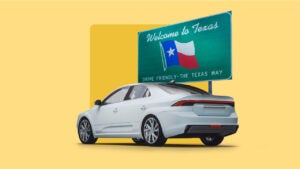Broad form car insurance




Our writers and editors used an in-house natural language generation platform to assist with portions of this article, allowing them to focus on adding information that is uniquely helpful. The article was reviewed, fact-checked and edited by our editorial staff prior to publication.
If your financial resources are limited, you may be looking for the cheapest car insurance you can find. One option could be broad form insurance. What is broad form auto insurance? Simply put, it is a type of policy that offers a minimum level of liability coverage, along with any other types of coverage—such as medical payments or personal injury protection—that are required by your state. It does not offer optional types of insurance. You cannot, for example, purchase broad form collision insurance. While broad form insurance may save you money, the tradeoff is that you will have less coverage, which could be problematic if you are in a serious accident. To help you make the right decision for your own situation, Bankrate’s insurance editorial team explains the potential pros and cons of broad form car insurance.
Broad form car insurance
A standard personal auto insurance policy generally covers any driver and vehicle listed on the policy declarations page. In contrast, a broad form car insurance policy only provides liability coverage for the named insured while driving a car, regardless of ownership. In most cases, no vehicles are included in the policy since broad form car insurance covers a specific driver rather than a specific vehicle, allowing the policyholder to drive any legally registered vehicle. When a driver borrows a vehicle that is covered on someone else’s insurance policy, their coverage will act as excess.
Availability of broad form car insurance
Broad form car insurance is available in certain states, including Colorado, Delaware, Idaho, Iowa, Maryland, Mississippi, Nebraska, Nevada, Ohio, Tennessee and Washington. Since this is not a standard type of car insurance, it is not available with every provider that writes coverage in these 11 states. Insurance companies that specialize in high-risk or nonstandard insurance, like Bristol West or Dairyland, are more likely to offer this coverage over standard providers.
What does broad form car insurance cover?
Generally, the only coverage offered with broad form car insurance is liability insurance, and the coverage amount is only enough to satisfy your state’s minimum requirements. For states requiring first-party coverage, such as personal injury protection (PIP) or medical payments, the minimum coverage limit is available as part of the policy coverage.
Compared to other car insurance policies, broad form coverage is incredibly basic. Because of this, it can be a cheap car insurance option. In the United States, the average car insurance premium for a minimum coverage policy is $664 per year. If budget is your primary concern when it comes to auto insurance, broad form coverage might be an option for you. However, most insurance experts recommend purchasing higher liability levels if you can afford to do so to provide you with more financial protection if you cause an accident. Additionally, liability-only insurance does not cover damage to the vehicle you are driving should you be at fault in an accident.
What broad form car insurance does not cover
Aside from states that require medical payments or PIP coverage, broad form car insurance does not provide coverage for the medical expenses of your or your passengers. Unlike other auto insurance policies, you do not have the option to add endorsements such as additional liability coverage, comprehensive coverage, collision coverage, rental coverage or roadside assistance.
Broad form car insurance also does not cover any other driver to drive your vehicle. If you are
the listed driver and you loan your vehicle to a friend, the liability coverage you purchased will not provide coverage if your friend causes an accident. However, if you are the owner of that vehicle, you will still be financially liable for any damage caused.
High-risk drivers who have difficulty securing a car insurance policy may benefit from a broad form policy. In most cases, an SR-22 filing can be added to a broad form policy to provide proof of insurance and reinstate a driver’s license and vehicle registration. If you have a DUI conviction or need an SR-22, speak with your insurance agent before purchasing this type of policy to ensure you meet your state’s insurance requirements.
Advantages and disadvantages of broad form auto insurance
With any auto insurance option, there are benefits as well as drawbacks. Being aware of the advantages and disadvantages of your policy type can help you to make more informed decisions when choosing auto insurance coverage.
Some states offer public auto insurance programs as a way for drivers from low-income families to obtain insurance. Each state has different income and driving history requirements to qualify for its program. States with low-income programs are:
- California: California Low-Cost Automobile (CLCA)
- New Jersey: Special Automobile Insurance Policy (SAIP)
- Hawaii: Assistance to the Aged, Blind and Disabled program (AABD)
- Maryland: Maryland Auto Insurance
Non-owner insurance: A broad form alternative
Although broad form car insurance is affordable, it is not widely available and not the right choice for all drivers. Non-owner insurance or NNO, is an alternative available in every state and with most car insurance companies. Similar to broad form insurance, non-owner insurance follows the driver and is not tied to a particular vehicle. It can be more affordable than standard coverage since comprehensive and collision coverage are not an option. Non-owner coverage may be a good option for you if:
- You sold your last vehicle and plan on buying a new car soon. Some insurance companies allow policyholders to keep their insurance policies open with a non-owner policy while in between vehicles to maintain discounts and avoid a lapse of coverage.
- You rent or borrow vehicles frequently but do not own a vehicle.
- You do not live with someone who has a vehicle. A key stipulation to a non-owner policy is for the policyholder not to have regular access to a vehicle. If you live with someone who owns a car, you may be added to their policy as an occasional operator.
- When you rent or borrow a vehicle, you tend to have passengers or want higher levels of liability coverage.
It can be hard to understand what the different types of car insurance will and won’t cover. Below is a chart to help you compare what coverage common types of car insurance have available vs. broad form insurance.
| Broad form insurance | Owner/operator or Non-owned insurance | Liability-only car insurance | Full coverage car insurance | |
|---|---|---|---|---|
| State minimum liability | ✔ | ✔ | ✔ | ✔ |
| Optional higher liability limits | ✘ | ✔ | ✔ | ✔ |
| PIP/Med pay coverage | When required by the state | ✔ | ✔ | ✔ |
| Uninsured motorist coverage | When required by the state | ✔ | ✔ | ✔ |
| Collision | ✘ | ✘ | ✘ | ✔ |
| Comprehensive | ✘ | ✘ | ✘ | ✔ |
| Acts as excess coverage? | ✔ | ✔ | ✔ | ✔ |
| Who is covered? | Named insured only | Named insured and co-insured | Named insured, listed drivers and *occasional operators | Named insured, listed drivers and *occasional operators |
Bottom line
Broad form insurance could be a good option for you if you do not own a car (or own an older car that wouldn’t require collision or comprehensive coverage), or rarely carry passengers. It’s best, however, if you also have a robust health insurance policy, since your car insurance will not cover you for any injuries or medical costs sustained while driving. The biggest drawbacks to broad form insurance are the low levels of coverage it offers and the fact that it’s only available in a handful of states. Another option to consider if you’re looking for low-cost car insurance is a non-owner policy, which often allows you to include an SR-22 filing if you need one. It can be a good idea to talk to a licensed insurance agent to determine the best course of action for your unique circumstances.
Frequently asked questions
You may also like


Does car insurance cover keyed cars?


How to choose the best car insurance company
